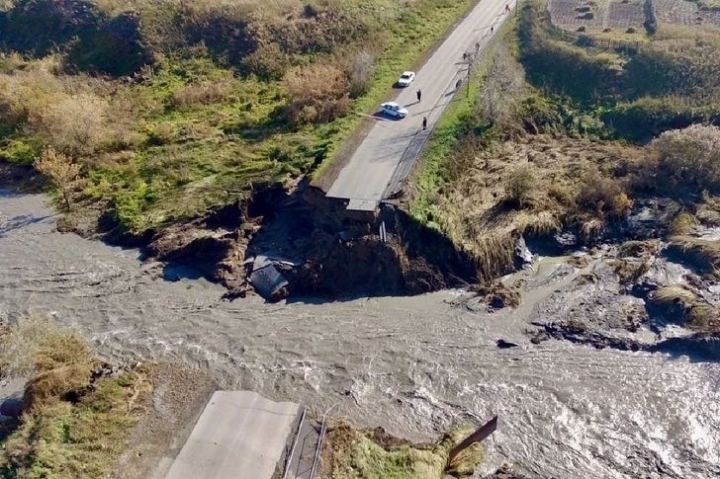An emergency occurred in the Issyk-Ata district of the Chui region of Kyrgyzstan — on June 27, at about 17:31, the dam of the high-mountainous Lake Takyr-Tor was broken. A powerful stream of water gushing from the lake completely washed away the road bridge, which was a key transport artery between the villages of Almaluu and Kebek-Biy, also known as «Gornaya Serafimovka». Traffic on this section of the road is completely blocked, emergency services are working on the spot to clear the rubble and prepare for restoration work.

Due to the direct threat to the population, a large-scale evacuation was carried out. About 950 local residents were promptly removed from the area of possible flooding. To temporarily accommodate them, the buildings of a local school, mosque, cultural center and boarding school were used. 11 minibuses provided by the Kant city hall and another 8 minibuses from the district transport service took part in the operation to evacuate citizens, which indicates a coordinated response from the authorities.
At the moment, according to the headquarters, the water level has stabilized and the threat of further flooding has passed. Fortunately, residential buildings and other civilian infrastructure, with the exception of the washed away bridge, were not damaged. To assess the scale of the incident and coordinate actions at the highest level, the head of the Cabinet of Ministers, Adylbek Kasymaliev, flew over the affected area. The leadership of the emergency response operation is entrusted to the Minister of Emergency Situations Boobek Azhikeev, who provides enhanced control over the situation.
The dam failure on Lake Takyr-Tor was an alarming reminder of the potential risks posed by any hydraulic structure. Regardless of size and purpose —be it a dam of a small dam or a dam of a giant hydroelectric power station — such objects accumulate colossal water energy. Any design miscalculation, violation of construction technology or insufficient maintenance can lead to catastrophic consequences. For Kyrgyzstan, where new hydroelectric power plants are currently being actively built, this incident serves as a serious warning about the need for strict compliance with safety standards, constant monitoring of the condition of existing facilities and a thorough examination of all new projects.




